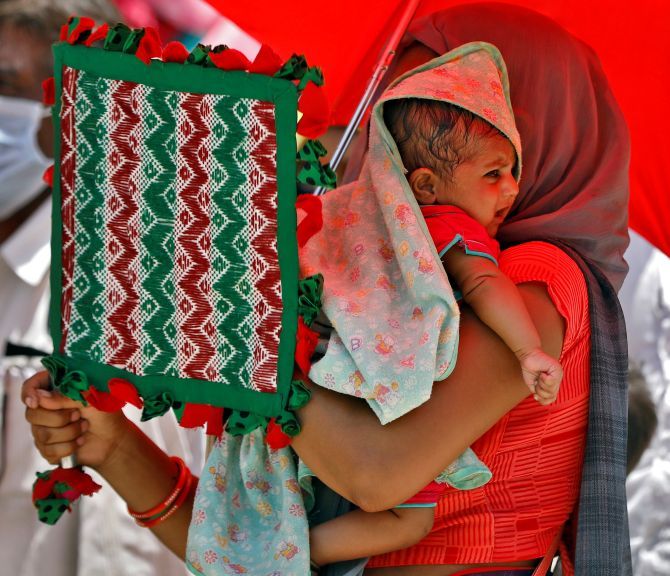The average temperature over India is projected to rise by 4.4 degree Celsius, while the intensity of heat waves is likely to increase by 3-4 times by the end of the century, according to a government report on the impact of climate change on the country.

India's average temperature has risen by around 0.7 degree Celsius during 1901-2018, largely on account of Green House Gases-induced warming, states the report by the Ministry of Earth Sciences.
It is likely to be published by Science and Technology Minister Harsh Vardhan on Tuesday.
The report has been prepared by the Centre for Climate Change Research, a cell under MoES' Indian Institute of Tropical Meteorology, Pune.
"By the end of the 21st century, average temperature over India is projected to rise by approximately 4.4 degree Celsius," the report states.
In the 30-year period between 1986 and 2015, temperatures of the warmest day and the coldest night of the year have risen by about 0.63 degree Celsius and 0.4 degree Celsius, respectively.
By the end of the century, the temperatures of the warmest day and the coldest night are projected to rise by approximately 4.7 degree Celsius and 5.5 degree Celsius, respectively, according to the report.
The frequencies of occurrence of warm days and warm nights are projected to increase by 55 per cent and 70 per cent, it says.
"The frequency of summer (April-June) heat waves over India is projected to be 3 to 4 times higher by the end of the twenty-first century," the report states.
The average duration of heat wave events is also projected to approximately double.
The combined rise in surface temperature and humidity, amplification of heat stress is expected across India, particularly over the Indo-Gangetic and Indus river basins, the report notes.
Sea Surface Temperature of the tropical Indian Ocean has risen by a degree Celsius on average during 1951-2015, markedly higher than the global average SST warming of 0.7 degree Celsius, over the same period, the report states.
Sea Surface Temperatures does have an influence over the Indian Ocean. The Indian Ocean Dipole is linked to the SSTs of the Indian Ocean.
A positive IOD, linked to the cooling/warming of the Indian Ocean waters, generally helps to have a good monsoon.
Sea-level in the North Indian Ocean has risen at a rate of 1.06-1.75 millimetre per year during 1874-2004 and has accelerated to 3.3 millimetre per year in the last two and a half decades (1993-2017), which is comparable to the current rate of global mean sea-level rise.
At the end of the 21st century, steric sea level in the NIO is projected to rise by approximately 300 millimetres relative to the average over 1986-2005.
The summer monsoon precipitation (June to September) over India has also declined by around 6 per cent from 1951 to 2015, with notable decreases over the Indo-Gangetic Plains and the Western Ghats, the report further states.










